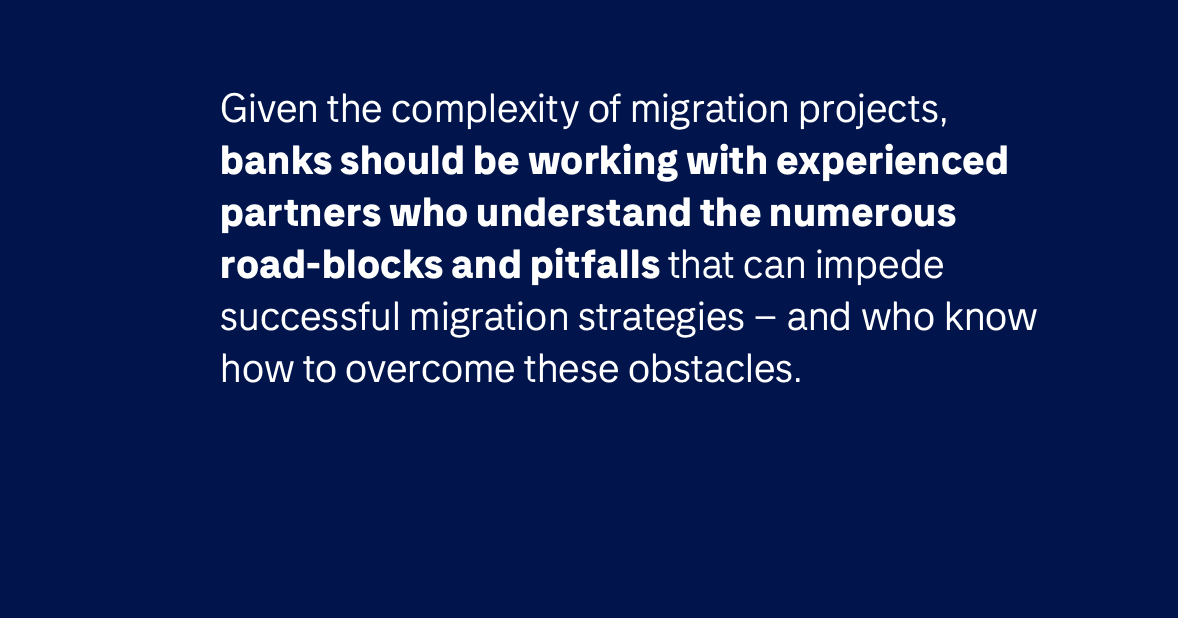Elevating Digital Payment User Experience: Harnessing the Impact of UX Writing in Bank Migrations

The migration from legacy payment systems to modern, digital-first systems is a transformative journey for banks. While risks and concerns accompany this process, the benefits of improved efficiencies, lower costs, and a better user experience outweigh them. In a report by Payments Cards and Mobile, banks surveyed expressed concerns about migration duration, lack of internal resources, and the risks of failure. However, embracing UX writing as a strategic approach during this migration can address these concerns and propel banks toward a more intuitive, efficient, and customer-centric payment system.
In this article, we'll explore the challenges banks face during migration, the benefits of UX writing, and how it can amplify the user experience to create a powerful and seamless digital payments environment.
Risks and Concerns in Migration to Digital-First Systems:
Banks considering migration to modern, digital-first payment systems must navigate several risks and concerns. According to the report by Payments Cards and Mobile, banks highlighted three major areas of worry:
1. Time of Migration: Banks are concerned about the length of time required for the migration process. The longer the migration, the greater the potential disruption to daily operations and customer experience. Delays in the migration process can lead to frustration among customers and impact the overall perception of the bank's reliability.
2. Lack of Internal Resources: Managing migration projects demands significant internal resources, ranging from skilled personnel to technical expertise. Many banks express concerns about the availability of these resources and their capacity to handle such complex projects. The shortage of internal resources can hinder progress and lead to extended timelines, ultimately affecting the overall success of the migration.
3. Risks of Failure: Internal complexity and the potential for operational downtime during migration pose substantial risks for banks. The fear of failure is a prominent concern as any disruption to critical banking systems can result in financial loss, damage to reputation, and customer attrition. The successful implementation of a new digital payments system hinges on mitigating these risks and ensuring a seamless transition for both the bank and its customers.
Benefits of UX Writing in Migration:

Despite these concerns, the benefits of migrating to modern, digital-first systems are compelling, and they can be further amplified through the integration of UX writing. By adopting UX writing as a core strategy during the migration process, banks can expect the following benefits:
1. Improved Efficiencies: Migrating to a digital-first system enables banks to embrace automation and streamline their operations. By integrating UX writing, banks can communicate effectively with users, reducing the need for manual interventions and empowering customers to navigate the payment system seamlessly. Clear instructions, error messages, and intuitive interfaces enhance efficiency, leading to more streamlined processes and reduced manual efforts.
2. Cost Savings: With a modern payment system, banks can reduce ongoing operational and maintenance costs. With UX writing, banks can enhance self-service options, empowering customers to handle various transactions independently. This self-service functionality reduces the need for extensive customer support, resulting in significant cost savings for the bank.
3. Enhanced User Experience: The user experience is at the heart of successful digital payment systems. UX writing experts understand the importance of clear communication and intuitive design. By focusing on the user experience, banks can reduce friction points, such as confusing interfaces or ambiguous instructions, resulting in a seamless and positive user experience. Customers who find the payment system easy to use and navigate are more likely to remain loyal and recommend the bank's services to others.
4. Trust and Security: Security and compliance are paramount in the financial sector. UX writing plays a vital role in building trust with customers by effectively communicating security measures, privacy policies, and authentication processes. Well-crafted messaging reassures users that their financial transactions are secure, reducing concerns about potential risks and fostering trust in the bank's digital payment system
5. Competitive Advantage: In today's digital landscape, offering a superior user experience is a key differentiator for banks. By incorporating UX writing into the migration strategy, banks can deliver a customer-centric approach that sets them apart from competitors. A seamless, intuitive, and engaging digital payments system enhances customer satisfaction, increases retention rates, and positions the bank as a leader in the industry.

The Power of UX Writing: Case Study of American Express
At WDIR, we have a proven track record of helping financial institutions elevate their user experience with strategic UX writing. We recently collaborated with American Express to launch a powerful B2B payments tool that allows suppliers to get paid quickly in 12 currencies across 40 countries. By leveraging our UX writing expertise, we created a user-friendly interface that guided suppliers through the payment process, ensuring clarity and ease of use. The result was a seamless and efficient experience that empowered users and strengthened American Express' position as a leader in digital payments.
Migration from legacy payment systems to modern, digital-first systems presents challenges and risks for banks. However, embracing UX writing as a strategic approach can transform these challenges into opportunities to enhance the user experience. By addressing concerns about migration duration, lack of internal resources, and risks of failure, banks can leverage the benefits of improved efficiencies, cost savings, enhanced user experience, trust and security, and competitive advantage.
The integration of UX writing amplifies the user experience, ensuring a smooth and intuitive transition to a modern, digital-first payments ecosystem. To level up your UX writing strategy and unlock the true potential of your payment systems, contact WDIR today and embark on a journey toward a powerful user experience in the new face of digital payments.
